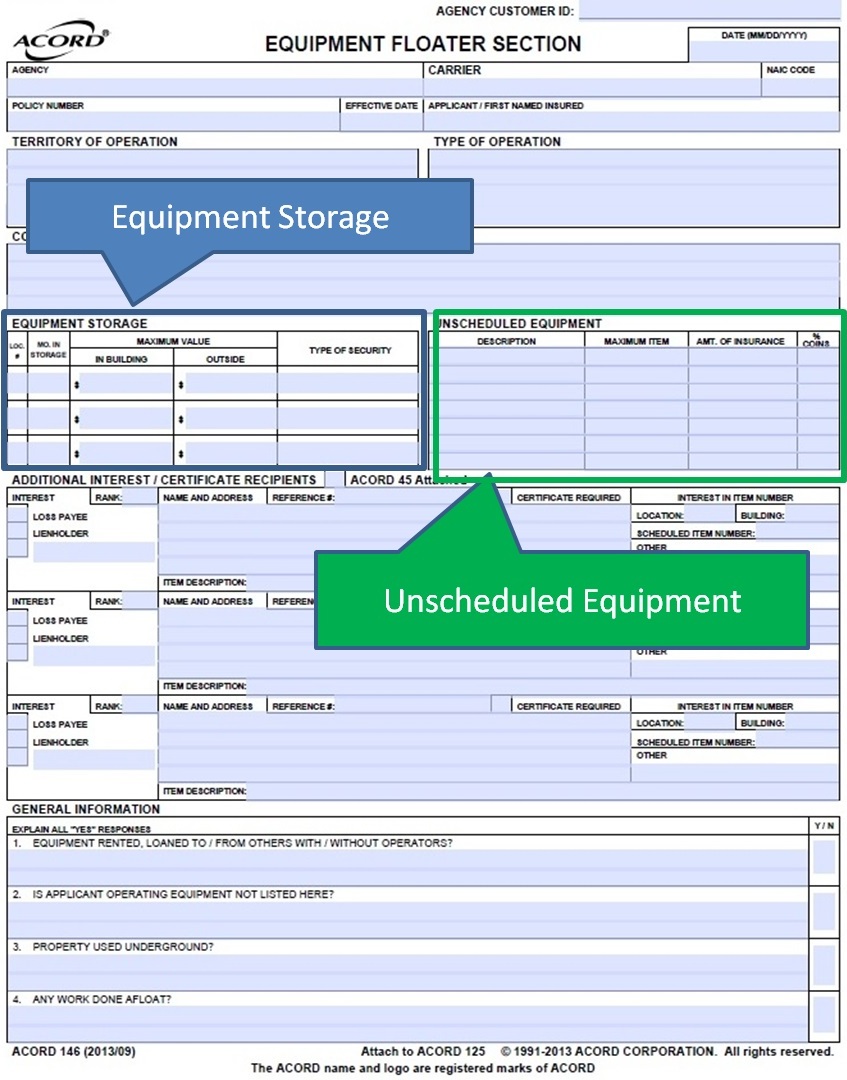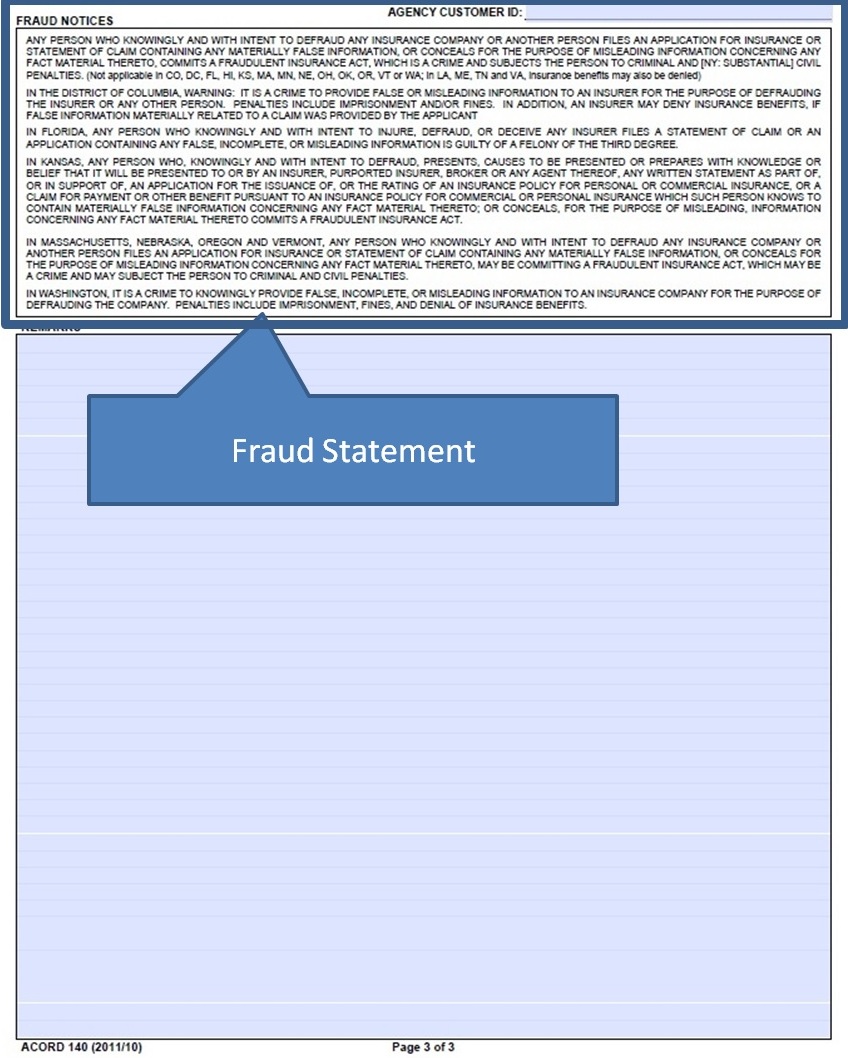How to Complete the ACORD 193 Open Cargo Additional Coverages, Exclusions and Remarks
ADDITIONAL COVERAGES
Check the boxes for any of the additional coverage you want included in this policy.
RETURNED / REFUSED - Sample Wording for Returned or Refused Coverage:
This policy also to cover shipments insured for the original voyage which have been Returned/Refused by the consignee. Such shipments are held covered subject to the terms and conditions stated herein, until:(i) disposed of by the Assured, or (ii) returned to the original point of shipment, provided such shipments remain in original packing. It being understood and agreed that notice must be given to the Company by the Assured as soon as refusal of acceptance is known to them.
FOB SHIPMENTS: FOB stands for Free On Board. Here is a good definition.
Sample Wording for FOB Shipments Coverage:
This policy is extended to cover:
A: The Assured's interest only in shipments sold by the Assured on F.O.B, F.A.S, Cost and Freight, or similar terms whereby the Assured is not obligated to furnish marine insurance, subject to this policy;s terms and conditions and continues until: (i) the goods and/or merchandise are loaded on board the overseas vessel, or (ii) until the Assured's interest ceases, whichever shall first occur.
B. The Assured's interest only in shipments purchased on F/O.B. or F.A.S port of arrival or similar terms whereby the Assured is not obligated to furnish marine insurance, subject to this policy's terms and conditions while in transit from the port of arrival in the United States by railroads or railroad express and connection conveyances and by licensed public motor truck carriers. To attach and cover from the moment the merchandise and/or goods leave from the port of arrival, and to cover continuously thereafter in due course of transit until delivered to final warehouse or until the Assured's interest ceases, whichever shall first occur.
FRAUDULENT B/L & RECEIPT: B/L stand for Bill of Lading.
WAR: This would provide coverage for loss resulting from acts of was.
DUTY: This covers the risk of partial loss by reason of perils insured against on the duties imposed on goods imported into the United States.
DE/CONSOLIDATION: This stands for Deconsolidation and Consolidation.
The insurance provided covers goods insured while on the premises of freight forwarders, export packers, consolidators, truckers, warehousemen or others for the purpose of storage incidental to transit, packing or repacking, consolidation, deconsolidation, distribution or otherwise anywhere in the world whether prior to loading or after discharge from overseas vessel for a period not exceeding 30 days after arrival at such premises.
BRANDS / LABELS:
Brands sample coverage wording...
In the event of loss or damage to property insured bearing and brand or trademark, the sale of which in any way carries or implies a guarantee, the salvage value of such damaged property shall be determine after the removal of all brands and any trademarks.
Labels sample coverage wording...
In case of damage affecting labels, capsules or wrappers, the Company, if liable, shall not be liable for more than an amount sufficient to pay the cost of new labels, capsules or wrappers and the cost of reconditioning the goods.
PAIRS /SETS: Physical loss of or physical damage to any one item of the goods and/or merchandise under this policy which consist of items in a pair or set, shall constitute a total loss of such pair or set.
DIC: Difference in Conditions. With respect to shipments purchased by the Assured on C.I.F. or similar terms, whereby ocean marine insurance is arranged by the seller and/or others, this policy is extended to cover the difference in conditions between such other insurance and the conditions of insurance for which the merchandise would otherwise have been insured hereunder. All shipments covered hereunder shall be valued and reported at the amount of the seller's insurance.
OTHER: List any other which apply to this application.
EXCLUSIONS
Check the check boxes for any of the following exclusions you want to apply to this policy.
MARRING, DENTING, CHIPPING & SCRATCHING
BREAKAGE
RUST
DISCOLORATION & OXIDATION
MECHANICAL / ELECTRICAL
OTHER - describe other.
REMARKS
This is a free forms text section for you to elaborate on any items above which did not provide enough space in the form.
If you need even more room you should use the ACORD 101 Additional Remarks Schedule
FREE ACORD FORMS TUTORIAL EMAILS
We offer a free daily or weekly email series for how to complete ACORD Forms. We never share this list. We never use this list for any other purpose than the tutorials. You can sign up below.
Sign Up for a Daily ACORD Forms Tutorial Email
Sign Up for a Weekly ACORD Forms Tutorial Email




























